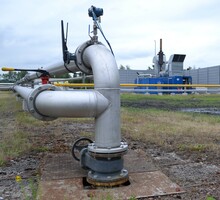- Significant hydrogen concentrations measured: 15% at 1,093m and 98% at 3,000m depth.
- Permit application submitted for 2,254 km² exploration area in Grand-Est region.
- Future measurement campaigns planned to assess hydrogen exploitation potential.
- MosaHYc project to enable H2 transportation via cross-border pipeline.

Discovery of Natural Hydrogen
FDE has discovered significant concentrations of natural hydrogen in a well previously drilled in Eastern France. This discovery was part of the Regalor research project, conducted in collaboration with the University of Lorraine and CNRS. Measurements at the Folschviller well site revealed hydrogen concentrations of 15% at 1,093m depth and an estimated 98% at 3,000m depth.
Exploration Permit Application
Following this discovery, FDE has submitted an application for an exclusive mining exploration permit, known as the “Trois-Évêchés Permit,” covering an area of 2,254 km² in the Grand-Est region. The company plans to conduct further hydrogen concentration measurements in three existing wells to enhance understanding of hydrogen formation, transfer, and production mechanisms in the Lorraine geological context.
Future Plans
Based on the results of these measurements, a pilot site will be identified and constructed to initiate local production and recovery of natural hydrogen. This initiative is part of FDE’s strategy to develop the H2 ecosystem in the Greater Region, which includes Grand Est, Wallonia, Luxembourg, Sarre, and Rhineland-Palatinate.
Infrastructure and Transportation
The project will benefit from the future commissioning of the MosaHYc project, led by GRTgaz and CREOS, which aims to transport hydrogen via a 100% hydrogen cross-border pipeline. This infrastructure will support the local production of ecologically and economically competitive energy for the region’s inhabitants, industries, and communities.

